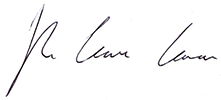In today’s Money Morning…commodities are the obvious highlight…EV demand sets the stage once more…a bigger and better battery metal boom…and more…
A little over three weeks ago, I declared the next decade would focus heavily on India for Aussie investors.
The tentative and still developing free trade deal we have with the country is just the first step. I expect we’ll see India quickly become a new, major trading partner — much like China has been for Australia over the past decade or so.
It’s one of the big trends that I think every investor needs to stay on top of. Because if things pan out as well as they could, it will likely deliver some of the biggest money-making opportunities ever seen…
As for the sectors to watch, commodities are the obvious highlight.
As I stated last time: coal, wool, and rare earths are just some of the immediate winners. But, as the AFR reported yesterday, ‘critical minerals’ may be set to boom first.
Apparently, Barry O’Farrell — the High Commissioner to India — is set to spruik our mining chops to a state-owned Indian consortium. It’s a deal that will reportedly lead this unnamed entity to acquire a stake in one of our critical mineral mines.
If true, this could be the instigator for a new, Indian-led boom in Aussie miners.
EV demand sets the stage once more
As O’Farrell told the AFR, India has one of the biggest EV industries in the world. To keep it growing, that’s going to require a lot more raw materials.
To quote the man directly:
‘It already has the biggest two- and three-wheel EV industry in the world, and it wants to challenge China in relation to battery storage. Australia, for its part, gets to lift the sale of new resources.’
For that reason, whether we see some of these battery metals become a key agenda in the free trade agreement or not, expect demand to continue. Because as the Indian economy continues to grow, Aussie commodities could be one of the key building blocks.
The icing on the cake here, too, is that India, much like Australia, has had somewhat of a falling out with China. It seems the Middle Kingdom is burning bridges worldwide, which will open up opportunities for alternative solutions.
India’s own Minister of Commerce, Piyush Goyal, has been very blunt on this matter. As the AFR notes:
‘“There is a lot of disillusionment with China here,” India’s Minister of Commerce Piyush Goyal said. “Our deficit has grown and grown, despite the fact that our political relationship is not good.
‘“There is no appetite left here for China,” Mr Goyal said. China has promised investment, but rather than the roads and infrastructure India wants, China has concentrated on startups and technology. “They promise a lot but do not deliver.”’
A bigger and better battery metal boom
Now, what all this means is that we can probably expect a lot of mining stocks to continue to thrive. Lithium, for instance, could continue to go nuts, as we’ve discussed at length here at Money Morning.
But you should be on the lookout for opportunities in more niche metals as well. Materials such as graphite, vanadium, and manganese are all extremely promising but far less well known. These are just a few examples of the kind of unknown ‘critical minerals’ that may become highly prized.
Or, as my colleague Selva explained earlier this week, old staples like copper may be worth looking at too. This base metal, along with nickel, has long been tied to its use in battery technology.
You can read all about that here if you missed it.
The overall point is that as long as EV demand continues, so will demand for these metals. For India, if they follow through on their plans to distance themselves from China, that will leave a large supply gap that needs filling.
As I’ve been saying, I believe Australia could be the perfect alternative to meet India’s needs.
And with a wobbly Chinese economy, now would be the perfect time for an Indian-led commodity boom.
Regards,
 |
Ryan Clarkson-Ledward,
Editor, Money Morning
Ryan is also co-editor of Exponential Stock Investor, a stock tipping newsletter that hunts down promising small-cap stocks. For information on how to subscribe and see what Ryan’s telling subscribers right now, click here.

